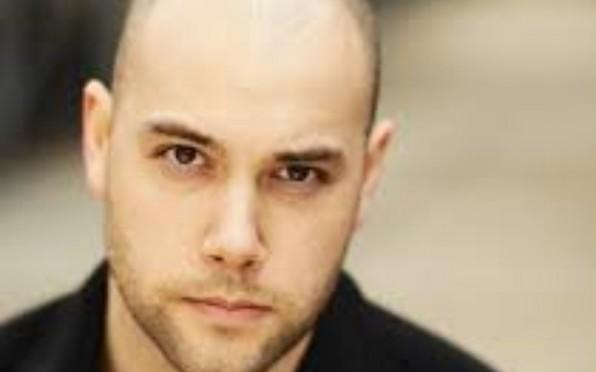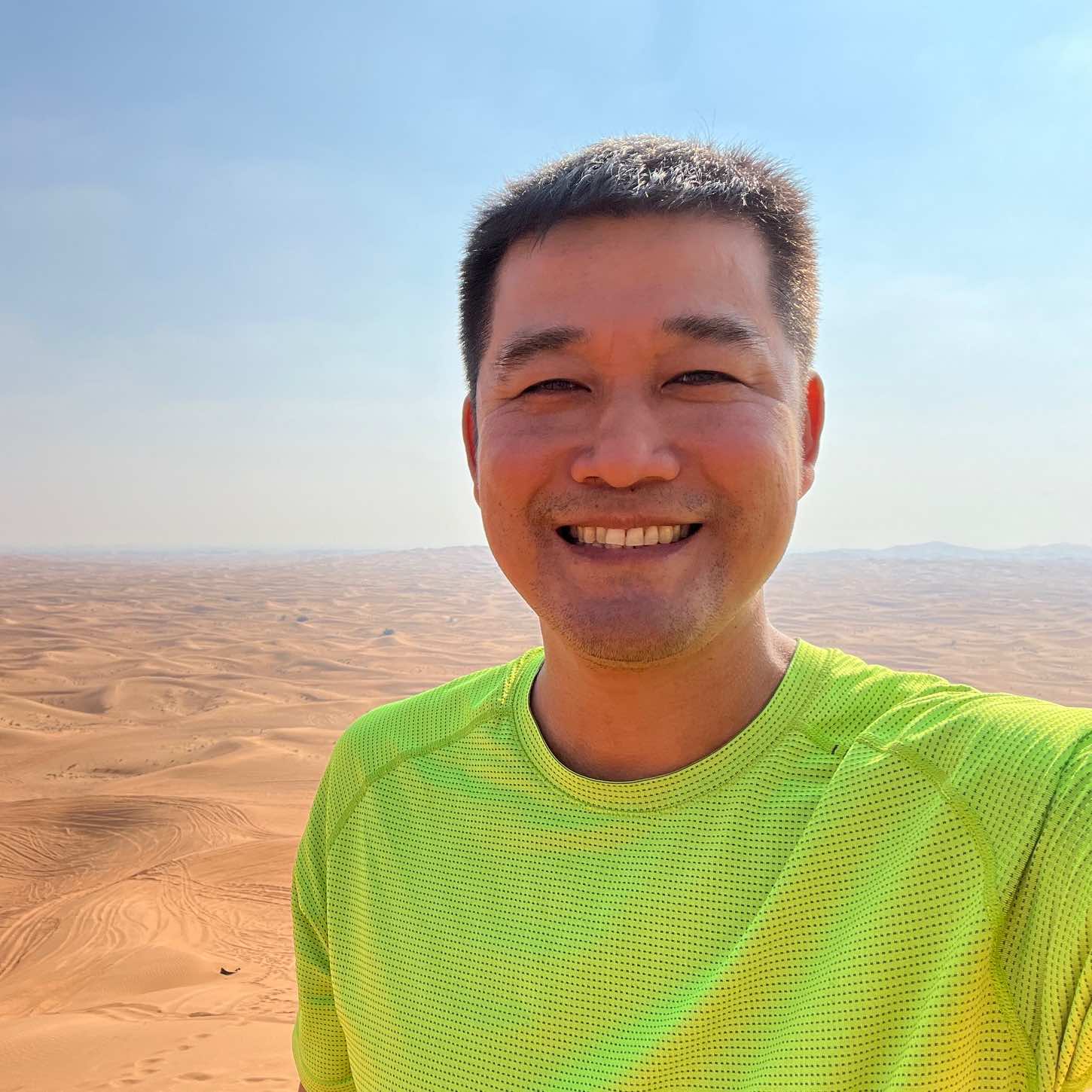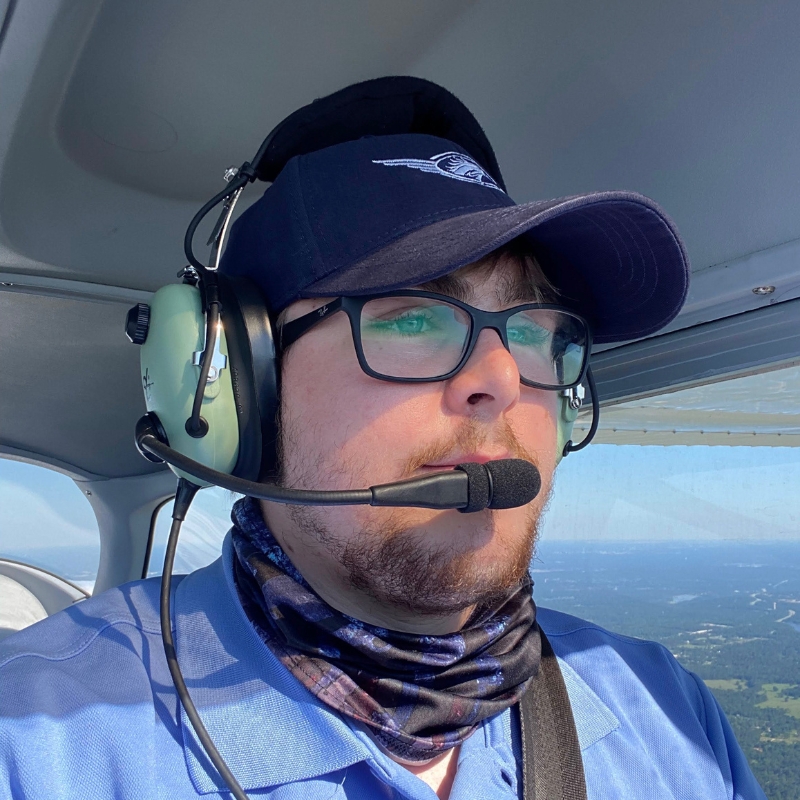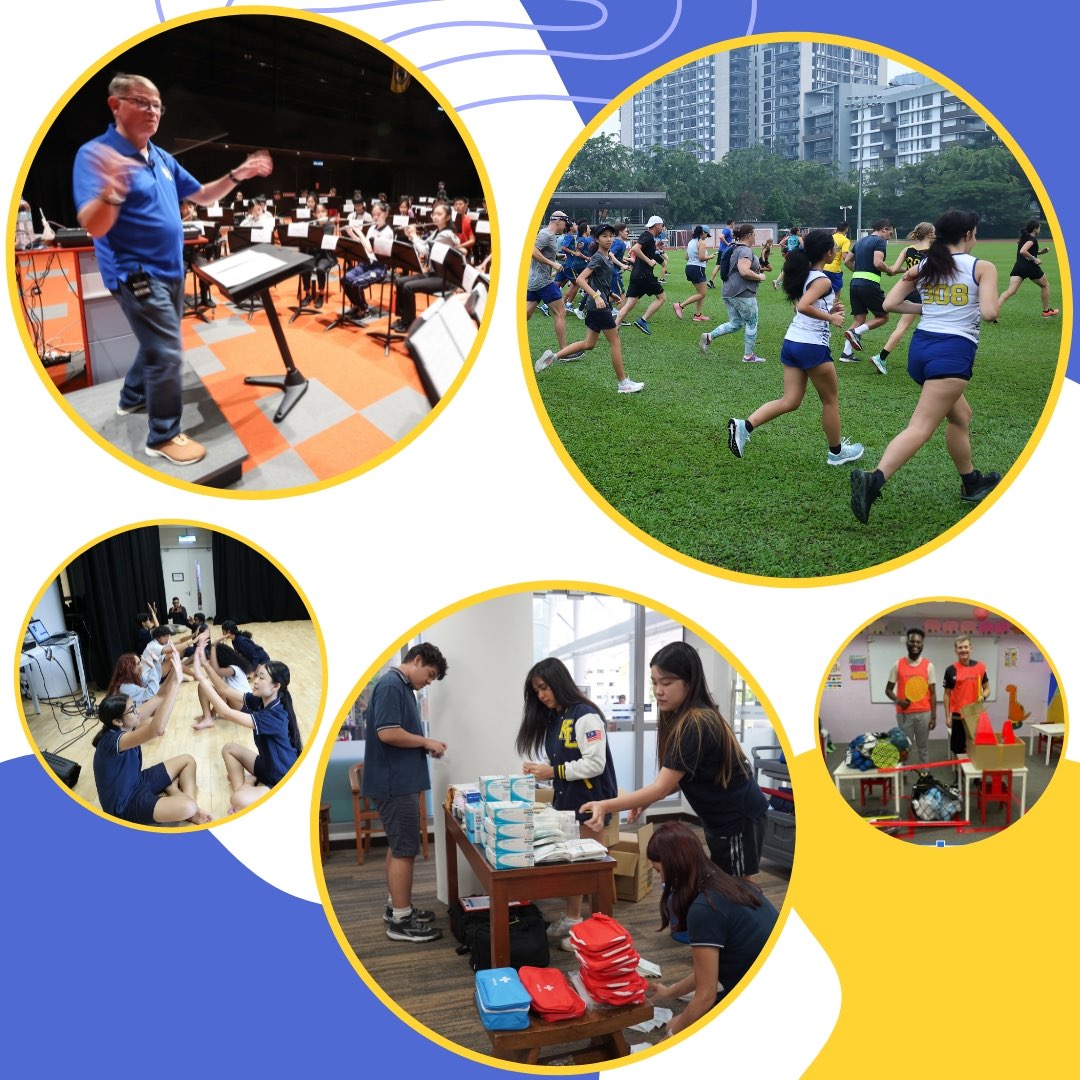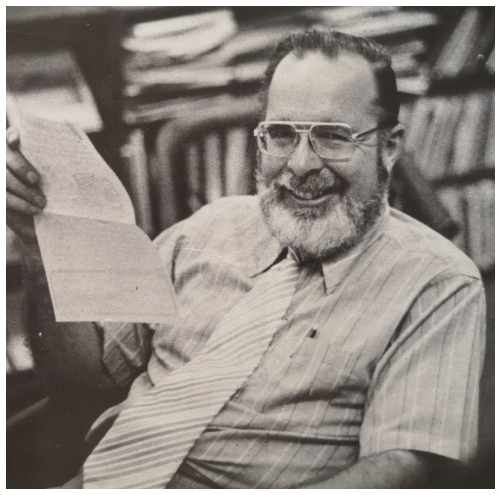Mick Lauer (’99)
“I would definitely attribute the years I spent in international schools performing in plays as the reason I continued to pursue performance not just throughout middle school and high school, but as a career.” Mick Lauer’s passion for art, performance, and creative expression has been a lifelong affair, beginning as far back to his time attending ISKL.
Following several years at Taipei American School (TAS), Mick’s family relocated to Kuala Lumpur and he attended ISKL from 1995 to 1997. Two decades later, with more than 500,000 subscribers to his YouTube channel, he is an acclaimed voice actor, animator, and content creator, lending his talents to numerous big projects. He has worked on Nickelodeons LEGO City Adventures, League of Legends and World of Warcraft, and collaborated with high profile YouTube content creators such as Markiplier, Jontron, and Gamegrumps.
Mick Lauer shared his memories of ISKL, as well as his career pathway and highlights with another ISKL Alumni, Gerald Anyi (’17).
GA: Were you very involved in creative pursuits at ISKL? The photo from the 1996 yearbook predicted a high profile career…
ML: Theatre was a very integral part of my experience at ISKL. Pretty sure I was involved in most of the main productions during my time there. From what I remember, I performed in “Fame”, “Return to the Forbidden Planet”, a murder mystery I can’t remember the title of, “Uncle Vanya”…I know I’m forgetting some.
Even outside the plays, I took part in IASIS events related to performance.
GA: Were there any teachers or mentors at ISKL who were particularly influential for your chosen career path?
ML: While I can’t recall the names of every play I was in, I do recall very fondly working with both Mr Bishop and Mr Rosevear. Working on plays, the long rehearsals, the highs of performances, you naturally spend a considerable amount of time developing a relationship with your directors. They were both very supportive and kind men. Almost polar opposites in some ways (Mr Bishop was definitely the casual laid-back type, while Mr Rosevear was more reserved and proper), but both were unified in their love and passion for theatre.
It’s a long way of saying that their support and passion was absolutely an inspiration for me. And I discovered a love for storytelling that I carry with me today.
GA: What impact did your experience at ISKL and as a third culture kid have on the course of your life? Is it something you’ve thought much about?
ML: After ‘97, I relocated to Japan and attended ASIJ. My life there was in a bit of upheaval, and I didn’t take part in any school plays. However I did write and perform a full length play with two other friends. The play itself is lost to time, as are most of my memories of Japan.
A year later, I returned to the United states and finished High School. Having spent most of my childhood in Asia by this point,
it was a bit surreal living in such a homogenous part of the world.
I would definitely attribute the years I spent in international schools performing in plays as the reason I continued to pursue performance not just throughout middle school and high school, but as a career.
GA: Your bio mentions that you attended NYU’s Tisch School of the Arts, then the Royal Academy of Dramatic Arts in London before making your way back to the States. For ISKL students or alumni considering which side of the Atlantic to apply for college, can you describe the differences, if any, between studying in NYC and London?
ML: My time in London attending RADA was actually part of my time at NYU. I can only speak on behalf of those two university experiences, but one major difference I learned was that (at least in regards to performance schools), in London they generally have much smaller graduating classes. The reason for this is to ensure the number of actors entering the industry is more commensurate to the opportunities in the industry. This is in pretty stark contrast to how they do it in the states, where they essentially have no qualms taking your money and dumping you into an almost literally infinite pool of aspiring performers.
GA: How did you get into animation and then voice acting? When you started your acting studies, did you realize how big this particular industry niche is?
ML: With animation, I’ve always enjoyed drawing. In college, I started with graphic design while working as a waiter, which evolved into web design (so I could quit the waitering job), and finally into animation. That’s not the most logical progression, but it’s the path my creative interests took me down while still working with clients and having the freedom to learn new creative skills. In terms of Asia influencing my work, of course. Not only being half-Taiwanese but also spending my most formative years consuming Asian media certainly affected my long term creative development.
Voice acting happened because I lost a lot of my passion for stage acting soon after graduating college. What I had discovered was that the “Acting Industry” had very little acting (at least at my stage). It was mostly focused on networking and additional classes with the hopes of networking, working internships at agencies with the hopes of more networking…people regurgitating names of directors and casting agents, colleagues embittered by years of battling each other over roles, actors not performing with the intent of sharing a story but with the hopes that they impress an agent in the audience, so…more networking. In time, my love for acting was sucked dry.
Eventually, my ex-wife signed me up for an introductory voice over class. I loved it. And continued to train. Obviously, like all industries (especially anything to do with entertainment) networking and all my least favorite parts of being a performer would eventually rear its head. But the investment in auditioning was much lower than stage or film. I could pursue it at my own pace while I worked my job and never felt pressure to look a certain way. In fact, my first major gig was voicing an elderly master (Roku) in “Yu-Gi-Oh! Zexal”, something very rarely done in Hollywood (having a 32 year-old playing an 80-something). Voice acting just gave me more freedom, and in many ways felt more pure (without makeup and constant pauses in performance for each shot). I suppose, by my own standards, that would make theatre more pure, however in theatre, everything is live, and with voice over you can retake the same line until it’s right (or as right as necessary). The story is the focus. The job of a voice actor is to support the entire project, not just standout and shine as a star. Most people don’t even know the names of many of the voice actors behind some of their favorite characters. The story and characters are placed above any one performer.
The man who trained me, Dan Green (aka Jay Snyder) definitely instilled me with a lot of love and respect for voice acting. A wonderful guy, super talented, amazingly supportive.
When I got into voice acting, I understood it covered a lot of ground. Commercials to cartoons, industrials to indie films, audiobooks and English-dubs, Hollywood major motion pictures and innumerable short internet videos.
GA: You have over 500,000 subscribers to your YouTube channel. Congratulations! Can you share your journey to YouTube success? What does it take to break through in such an incredibly competitive space?
ML: I started by making short animations for a site called Newgrounds. It was mostly just a fun hobby. I had a chance to be creative, to be silly, to learn a new skill, to meet a new community of like-minded artists and animators and voice actors (mostly like-minded in that we were happy to produce creative projects ourselves without the help of others). Eventually, I started posting my work to YouTube, where I slowly began growing an audience.
That’s it, really. There are certainly methods folks use nowadays to get more eyes on their videos. But like with acting, I’m not a big fan of all the tactical strategies used to boost a career. I don’t look down on folks that do, everyone’s got their path. You do you.
The only thing I know for a fact that is essential to breaking through in a competitive space, is consistency. That and luck.
GA: What have been your favorite projects and roles? And the people with whom you’ve most enjoyed collaborating?
ML: I’m sure I’m going to forget some projects, but off the top of my head, voicing Abbacchio in “JoJo’s Bizarre Adventures” was a dream come true. I’ve been enjoying Marrow on “RWBY” as I rarely get to voice younger characters. Husker in “Hazbin
Hotel” has been a bit wild due to the passionate audience. Getting to voice in “League of Legends” (God-King Garen) and
“World of Warcraft” (Mag’har orc race) was neat, as I’d grown up around people who were heavily invested in the franchises.
Voicing in “Sekiro” was also a dream come true as I’m a huge FromSoftware fan. Voicing for “Ghost of Tsushima” was cool, as
I had to speak Mongolian… and I don’t speak Mongolian. And while I could go on, I’ll end with Captain Wheeler of “LEGO City Adventures”, my first major role on a Nickelodeon series. I grew up watching Nickelodeon as a very young child, so it meant a lot to me to finally be on a show there.
As for who I enjoy working with, aside from very few people, I genuinely enjoy working with everyone.
GA: What was it like to collaborate and interact with YouTube content creators such as GameGrumps, Jontron, Markiplier, and your contemporaries in SleepyCabin? What do you do when you’re together?
ML: With GameGrumps, I know Arin and Ross from Newgrounds. Jontron. I don’t even really remember how we met. Markiplier I met at a bar, he was a fan of some of the old Newgrounds stuff myself and some friends had done. The guys from Sleepycabin all happened at Newgrounds as well.
Our interaction is probably like most, I guess. Obviously all those people are very different individuals, so the interactions are going to vary widely. Arin and Ross I have fond memories of hanging out with back in the day. Went to Jon’s wedding, was a blast. Mark is an extremely hard worker, and most of the time I’ve spent with him has been working on some of his short film projects (so our relationship outside of working was fostered between more working. Lots of work). The Sleepycabin guys have been my roommates, my friends, my family, my colleagues, my collaborators, but in general our interaction is just that of friends. Occasionally, we’ll lend a hand to someone’s project.
GA: Tell us some more about your recent projects, Blood Sun Vendetta and Hazbin Hotel. Where does your inspiration come from? Do you delve into your own history for some of the characters?
ML: “Hazbin Hotel”, I’m just a voice actor. I particularly enjoy being a part of it due to the number of people I know personally that are involved. Always great to see your friends succeeding so well.
“Blood Sun Vendetta” is a personal animation project based in the world of Araki Hirohiko’s “JoJo’s Bizarre Adventures”. I suppose the short of it is: I got tired of making animated parodies on YouTube. I loved it when I did it, it helped me build an audience, but I just felt like it was time to create something more substantive, something that pushed me to improve on every level, and would better showcase the type of work I want to put out into the world. Financially, it’s unprofitable, the entire project is a loss. However, every day I get to work on it (which is pretty much everyday), I learn and improve in all the areas that I’d like to: storytelling, storyboarding, drawing, animation, post-production, character design…the list goes on. And while I’m sure there’s other more financially responsible ways of picking up those skills, I just got tired of waiting for the “right time”. So I saved up some money, and pulled the trigger.
Because the story I’m working on takes place in Mexico, a few years ago, I flew to Mexico, rented a car, and made my way across the country in about 8 days. I absorbed as much information as I could, took thousands of photos, talked to as many people as I could, wrapped up the trip with a day on the beach, then got back to Burbank and started storyboarding. I spent a year storyboarding 3 full episodes (18 chapters).
The next year (2020) was spent animating Chapter 1. What I thought would be a 3-4 minute animation ballooned into 12 and a half. During that time I also had a number of animation gigs for commercial clients as well as voice acting jobs.
At my current pace of animation, the project just isn’t sustainable. However, my hope is that with time as more and more chapters are released, interest will grow as well as support and I’ll be able to hire others to help (as the project is pretty much a one-man show).
The inspiration for the project is pretty clear as it’s an animation set in the existing fictional universe of JoJo. There are certainly aspects of my own life that are woven throughout (though mostly in small fragments), but I’m mostly interested in including the stories and lives of others.
GA: What advice do you have for current students who are hoping to carve out a career in voice acting in video games and TV shows, creating animated shows and shorts, or as a YouTube content creator?
ML: Start now. I’m not saying to forfeit your social life. Parties, relationships, all that stuff is a key part of growing up. I’m not suggesting holding yourself up in your room while you spend every hour of free time drawing or practicing voices.
But start now. The tools are easier than ever to get a hold of and use. There’s plenty of platforms out there where you can share your creativity. And even while you struggle to start, there are so many skills that you’ll learn in the process of making your ideas into a reality that will carry over to so many different facets of your life.
GA: Has the Covid-19 pandemic created more work for you, with so many people trying to stay occupied while in lockdown? Has it been easy for you to land roles and find work throughout?
ML: Voice acting wasn’t really affected by the pandemic. Sure, I miss biking to the studios and working face to face with directors and engineers, but recording from home certainly has its benefits.
It hasn’t necessarily been easier to land roles, as everyone is now recording from home, so even voice actors that didn’t have home studios have since gotten them, so home-recorded auditions are more common…meaning, the pool actually got more competitive.
GA: Do you still keep in touch with other ISKL Alumni?
ML: Not closely. Back in 2013 we had a mini-reunion. I believe it was unplanned, we just happened to have a half-dozen of us in NYC at the same time. To be honest, I’m pretty bad about keeping in contact with most people. But when we got together, it felt right, like no time had passed at all. I think we share that bond (all expat students, to a degree), the experience of growing up together in a place so different from what we were accustomed to before and after our time together in Malaysia.



